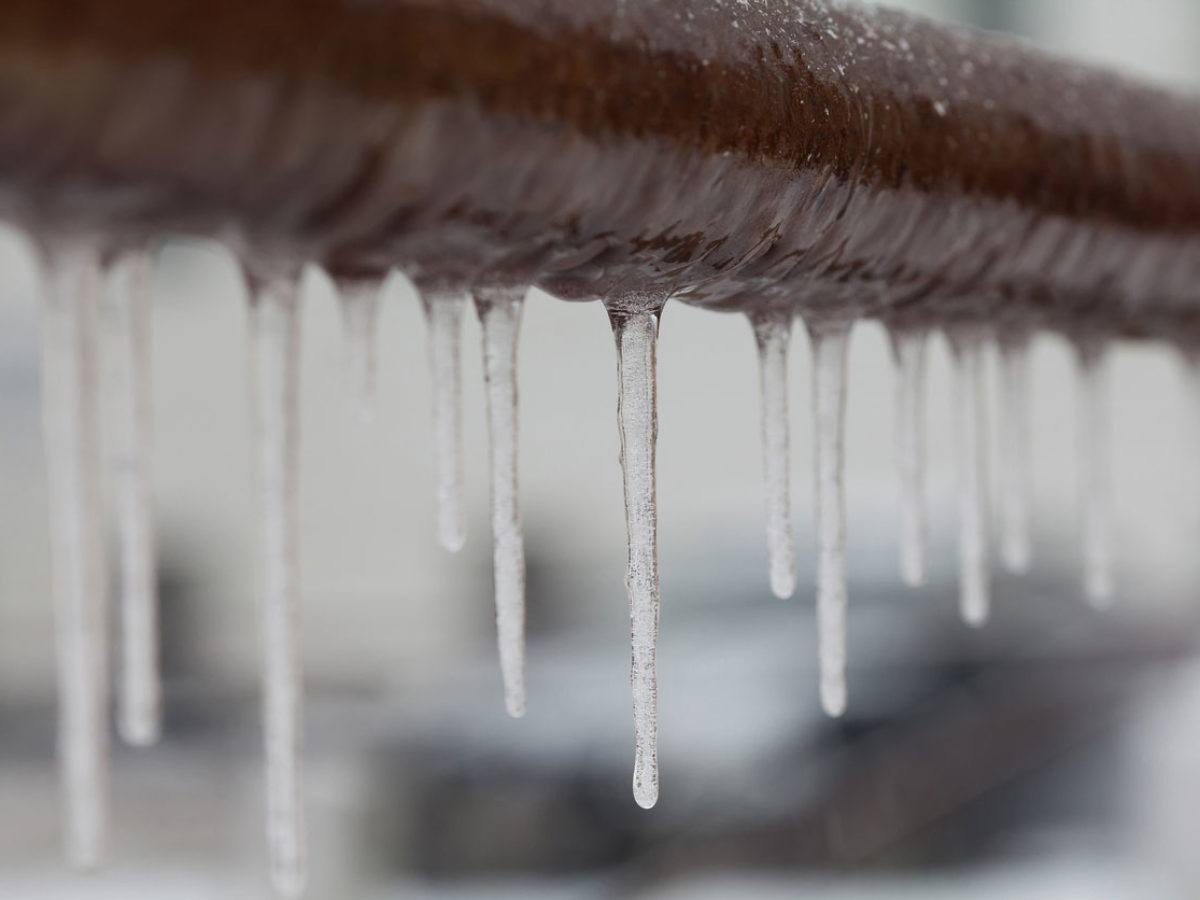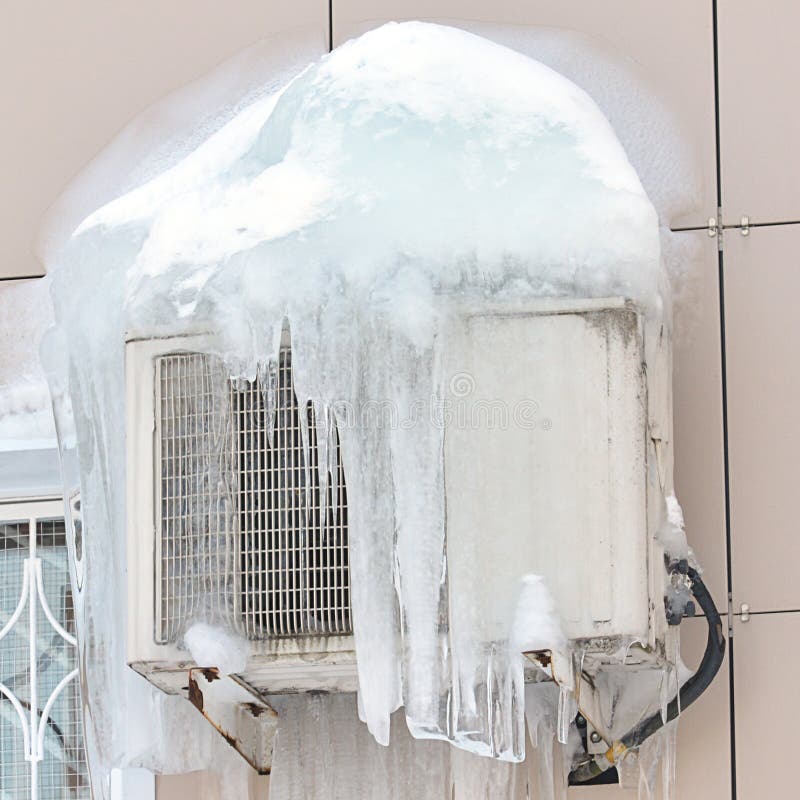Handling a Frozen AC Pipe - Guidance for Addressing the Issue
Handling a Frozen AC Pipe - Guidance for Addressing the Issue
Blog Article
The content listed below pertaining to Why Is Ice On My Outside Air Conditione is definitely compelling. Give it a try and draw your own assumptions.

Intro
Uncovering that your air conditioning pipe is iced up can be concerning, particularly throughout warm summertime when you rely upon your ac system the most. Recognizing what to do in such a circumstance is essential to prevent additional damage to your air conditioning system and ensure your convenience indoors.
Recognizing the Causes
Several variables can contribute to the freezing of an AC pipe. Recognizing these reasons can help you attend to the problem properly.
Lack of Airflow
One common reason for a frozen a/c pipeline is inadequate air movement. When the air flow over the evaporator coil is limited, it can create the coil to go down below freezing temperature level, bring about ice development on the pipeline.
Reduced Refrigerant Levels
Insufficient refrigerant degrees in your AC system can also result in a frozen pipeline. Reduced cooling agent degrees can trigger the stress in the system to drop, leading to the freezing of dampness on the evaporator coil.
Winter Conditions
In chillier climates, freezing temperature levels outside can add to the freezing of AC pipelines. If your a/c unit is not effectively protected or if there are leaks in the ductwork, chilly air can penetrate the system, causing the pipeline to freeze.
Dirty Air Filters
Filthy or clogged up air filters can restrict air flow in your air conditioner system, leading to numerous issues, including an icy pipeline. It's essential to replace or clean your air filters regularly to make certain correct air movement and avoid ice build-up.
Signs of a Frozen Air Conditioning Pipe
Identifying the signs of an icy air conditioner pipeline is essential for punctual action.
Minimized Airflow
If you discover a significant reduction in air movement from your vents, it could suggest an icy pipeline.
Ice Buildup on the Pipe
Noticeable ice buildup on the cooling agent line or the evaporator coil is a clear indication of an icy a/c pipe.
Weird Sounds from the Unit
Unusual sounds, such as hissing or bubbling, coming from your air conditioner device can signify that there's ice present on the pipeline.
Immediate Actions to Take
When faced with an icy AC pipeline, it's vital to act rapidly to stop further damage to your cooling system.
Shutting off the air conditioner
The initial step is to switch off your air conditioner to prevent the system from running and worsening the problem.
Looking for Blockages
Evaluate the area around the indoor system for any type of obstructions that might be obstructing air movement, such as furnishings or drapes.
Thawing the Pipe
You can make use of mild approaches like putting towels soaked in cozy water around the icy pipe to help thaw it gradually.
Safety nets
Taking preventive measures can aid prevent future incidents of a frozen air conditioning pipeline.
Regular Maintenance Checks
Set up regular maintenance contact an expert HVAC technician to ensure that your air conditioner system is running effectively.
Transforming Air Filters
On a regular basis replace or cleanse your air filters to prevent air flow restrictions and preserve optimum performance.
Shielding Exposed Pipes
If your AC pipelines are exposed to cold temperatures, think about insulating them to stop freezing throughout winter months.
Seeking Professional Help
If DIY approaches fall short to solve the problem or if you're unsure about how to proceed, it's finest to look for aid from a certified HVAC technician.
When DIY Methods Fail
If your attempts to thaw the pipeline or address various other problems are not successful, it's time to hire a professional.
Significance of Hiring a Professional HVAC Technician
A qualified HVAC specialist has the know-how and tools required to identify and fix concerns with your AC system securely and properly.
Verdict
Dealing with an icy air conditioner pipe can be an irritating experience, yet recognizing just how to react can aid decrease damages and restore convenience to your home. By understanding the causes, recognizing the indicators, and taking punctual action, you can efficiently deal with the issue and stop future occurrences.
What to Do If Your AC Line Is Frozen
Make Sure All Supply and Return Air Vents Are Open
If you notice problems with airflow, the first thing you should do is check your supply and return vents. Supply vents distribute clean, conditioned air throughout your home. As this air becomes stale, it’s pulled into the return vent, where it’s reconditioned before being sent back out through the supply vent.
When these vents are closed, air won’t flow in the home. Before examining your AC, check the vents in every room and ensure they’re all open.
Check for a Dirty Air Filter
Another possible cause of limited airflow is a dirty air filter. Your air conditioner’s filters catch elements you don’t want to breathe in, such as dirt and dust. Over time, filters can become clogged, ultimately blocking air from flowing in and out. The lack of airflow can then cause the entire coil to freeze and will completely restrict any air from moving through it. The AC may need to be powered off for one to two days to allow the coil to thaw after replacing the filter to allow proper functioning of the unit. This debris can also accumulate on your AC’s evaporator coil, requiring a more serious repair. In general, air filters should be cleaned regularly (about every two weeks).
Assess Your Outdoor Unit
In addition to checking your AC, assessing the outdoor unit is a good idea. Also known as the condensing unit, it works with your interior unit to release heat outside. An issue with the outdoor unit can result in rising internal temperatures.
Overgrown Shrubs or Clogged Leaves
From leaves and twigs to shrubs and debris, there’s no shortage of outdoor elements that can accumulate around your condensing unit. When these elements get lodged inside the unit, they can block airflow. Fortunately, removing the blockage can solve the problem.
Sounds of a Broken Fan
Shrubs and leaves aren’t the only things that can impede your outdoor unit’s airflow. If the fan is broken, the unit won’t be able to properly get rid of heat — which means the internal temperature won’t go down. First, make sure the fan is spinning. If it is, check for the following sounds of a broken fan:
Buzzing Rattling Screeching Hissing Clicking Preventative Measures
Nobody wants to deal with a frozen AC line. In addition to causing problems with your air conditioner, they require professional repairs. On the bright side, there are preventative measures you can take to help ensure this issue doesn’t arise in the first place.
https://www.coopergreenteam.com/blog/what-to-do-if-ac-line-frozen

As a fervent reader about Air Conditioner Frozen? How To Fix your Frozen AC Line, I assumed sharing that editorial was a smart idea. Sharing is nice. Helping others is fun. Thanks a bunch for your time. Visit us again soon.
Book Service Now Report this page